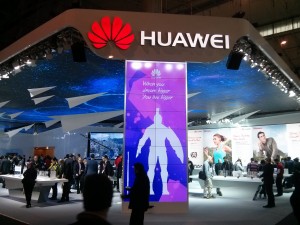TELECOMS: Huawei Outspends ZTE, Lenovo At Telecoms Extravaganza
Bottom line: Huawei’s massive spending at the world’s biggest telecoms show this week hints at its determination to make big inroads in Europe and the US this year for its older networking equipment and newer smartphone businesses.

In between running from interview to interview at the world’s largest telecoms show this week in Barcelona, I managed to scribble down some notes on which Chinese firms were spending the most heavily at this year’s Mobile World Congress (MWC). Such spending hints at company priorities for the year ahead, including which markets they are targeting. In this case it’s worth noting that MWC is largely a show for customers from North America and especially Europe, so anyone who attends as an exhibitor is almost certainly eying those markets.
All that said, it should come as no surprise that telecoms giants Huawei and ZTE (HKEx: 763; Shenzhen: 000063) were the 2 biggest spenders among Chinese firms at this year’s show, based on my own analysis. PC giant and smartphone aspirant Lenovo (HKEx: 992) was the only other Chinese firm with major representation. But perhaps most surprising was the size of Huawei’s presence, which easily dwarfed both ZTE and Lenovo.
The 3 major areas I looked at included event sponsorship and advertising, and the size of each company’s actual booth at the show. Huawei was a leader in each of those categories, especially the second and third. While it’s difficult to get companies to talk officially about their spending, one of my contacts told me that some of his Huawei friends were saying their company spent a whopping 100 million yuan ($16 million) on its booth alone, and sent some 3,000 people to the show.
All that said, let’s begin my MWC spending analysis with the easiest barometer to track, event sponsorship. Both Huawei and Lenovo were listed in the MWC brochure as supporting sponsors, the highest of several levels of sponsorship for the event. Interestingly, leading Chinese video provider LeTV (Shenzhen: 300104) was also on the list of supporting sponsors, even though it didn’t have an official booth at the show. ZTE’s name didn’t appear on the list of official event sponsors at all, which perhaps was an oversight by the company.
Next let’s look at event-based advertising, which is an imprecise science since it’s impossible to see all the ads at such a big event. In that category, ZTE was one of the most visible, with blue-and-white banners bearing its name welcoming visitors outside the show’s main entrance. I didn’t see Lenovo’s name anywhere outside its own booth, and also felt that Huawei’s name was strangely absent in the advertising realm.
But then one of my contacts pointed to our lanyards, which are the signature cords that everyone at trade shows wears around their neck, usually carrying a badge with the person’s name and company affiliation. It was then I realized the thousands of red lanyards being worn by everyone were all imprinted with the Huawei name and logo, in a piece of advertising that must have cost the company another million dollars or more.
If Huawei was defeating the competition in the sponsorship and advertising categories, its dominance was overwhelmingly confirmed with its actual booth at the show. I calculated the Lenovo booth was the smallest of these big 3 companies, at about 650 square meters. That was easily bested by ZTE, which was nearly twice that size at 1,100 square meters, again according to my calculations. Huawei’s booth in the same hall was larger still at about 1,600 square meters, but then I discovered it also had an even larger meeting area that took up about a quarter of another hall completely.
I should point out that Lenovo is a relative newcomer to the show, and was only attending for the second time as it tries to build up its smartphone business. Huawei and ZTE are more established attendees, and here it’s again worth pointing out that Huawei is more than 3 times as big as ZTE, based on last year’s revenue. Still, the massive spending by Huawei at the event, which may have totaled as much as $30 million, seems like a huge amount for any company, and shows its determination to make big inroads into both Europe and the United States in the year ahead.
Related posts:
